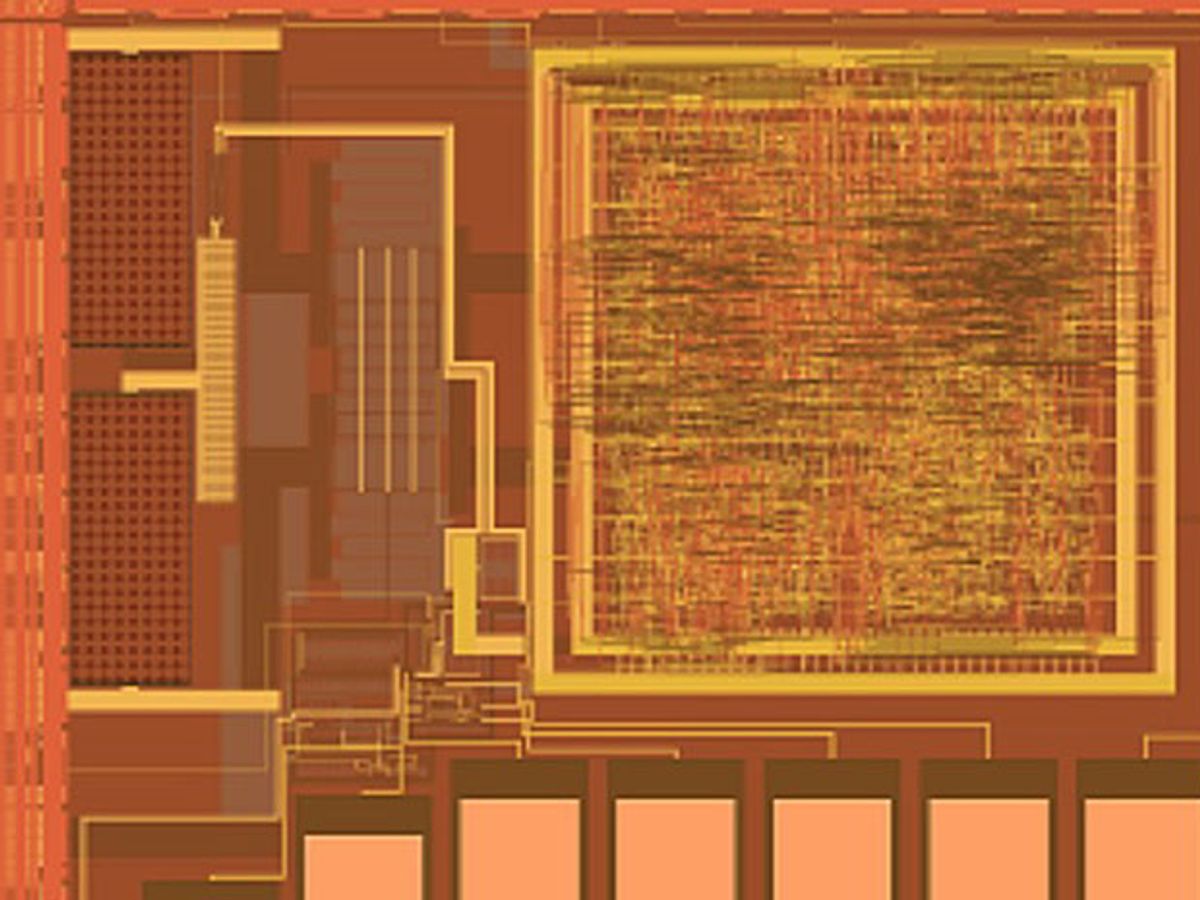Engineers at North Carolina State University have applied a new technology called RF-only logic to create passive RFID tags that are 25 percent smaller than today’s. And a smaller tag means a cheaper tag.
The space savings comes from eliminating a circuit usually considered crucial to the chip’s operation—the rectifier. Passive RFID tags, the most common ones, are powered by an RF signal provided by the tag reader when it’s nearby. The RFID’s rectifier takes the AC radio signal and turns it into DC for use by the chip’s logic circuits. The innovation was to develop a set of circuit techniques that eliminate the need for the rectifier, allowing the logic to run directly from the oscillating radio signal.
“By eliminating the hardware that is used to convert the AC signal to DC for powering the circuit, we are able to make the RFID tag much smaller and less expensive,” says Paul Franzon, a professor of electrical and computer engineering at NC State. He presented the RF-only RFID chip earlier this month at the IEEE RFID 2016 conference in Orlando.
A typical RFID rectifier consists of a set of diodes and a capacitor. Connected to the incoming RF signal, the diodes direct only the positive part of the wave through, and the capacitor smooths out the period between the peaks. This setup typically takes 25 percent or more of the RFID chip area and adds cost and complexity, says Franzon.
He and his students replaced it with a pair of transistors for each logic circuit. The assemblage basically supplies electricity to the logic during half the radio wave, and then—relying in part on the capacitance of the next logic circuit—prevents it from leaking away during the other half.

“So what we’re kind of doing is distributing the rectifier,” says Franzon.
Because it’s only on for half the cycle, it takes several cycles of radio waves for a logic circuit to make a transition, say from 0 to 1. But that’s not really a problem. “Every RF cycle you do a little more of the transition,” he says.
To further slim the circuitry, Franzon and his students developed a design algorithm that lets logic circuits share these supply transistors when possible.
His team had to solve several other design challenges to make its RF-only logic tag. For one, they had to make the power supply work both when the RFID reader is close to the tag and providing a strong signal and when it’s farther away and giving a weaker signal. For another, they needed to design a data retention flip-flop to bridge the 1.5 microseconds when the RFID protocol requires that the reader not provide power.
The RF-only technique provides a full compliment of logic, and he and his team are looking for other Internet-of-Things applications it can conquer, says Franzon. His team has even designed an RF-only analog-to-digital converter, though it played no part in the RFID project.
Samuel K. Moore is the senior editor at IEEE Spectrum in charge of semiconductors coverage. An IEEE member, he has a bachelor's degree in biomedical engineering from Brown University and a master's degree in journalism from New York University.



